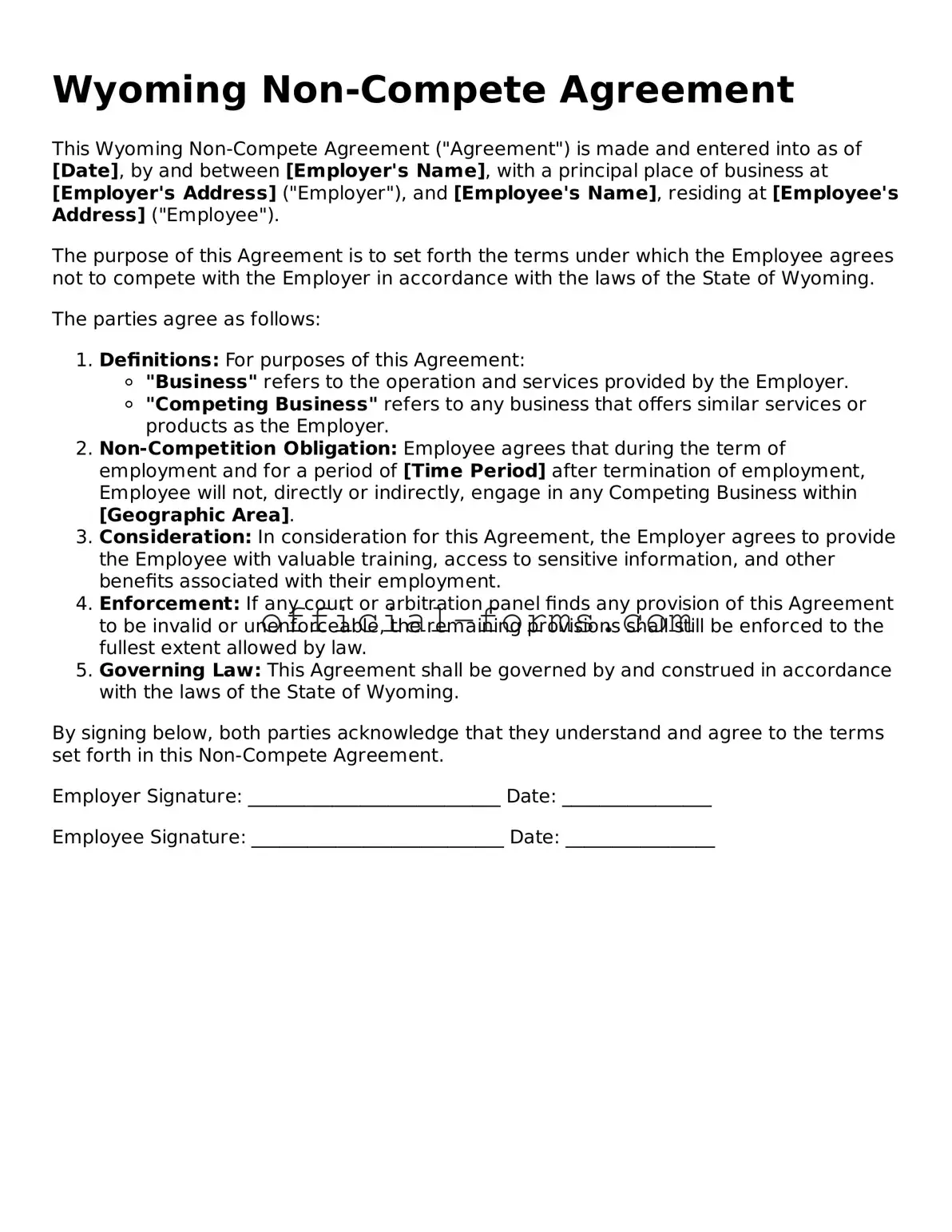Filling out the Wyoming Non-compete Agreement form can be straightforward, but many people make common mistakes that can lead to complications later. One frequent error is not clearly defining the scope of the non-compete. It's essential to specify the geographical area and the type of work restricted. Without clarity, the agreement may be deemed unenforceable.
Another mistake is failing to include a time frame for the non-compete. Many individuals overlook this detail, thinking it is unnecessary. However, a non-compete should have a reasonable duration. An agreement without a specified time can create confusion and may not hold up in court.
People often forget to consider the reasonableness of the terms. If the restrictions are too broad or severe, a court may reject the agreement. It’s crucial to ensure that the terms protect the employer's interests without unfairly limiting the employee's ability to find work.
In addition, some individuals neglect to review the agreement with legal counsel. While it might seem like an extra step, having a professional review can help identify potential issues. This oversight can lead to misunderstandings about rights and obligations.
Another common mistake is not including consideration in the agreement. Consideration refers to what each party gains from the agreement. If one party does not receive anything in return for signing, the agreement may be unenforceable.
Additionally, people sometimes fail to keep a copy of the signed agreement. This can create problems if disputes arise later. Both parties should retain a copy for their records to avoid confusion down the line.
Finally, individuals may rush through the process without fully understanding the implications of the agreement. Taking the time to read and comprehend every part is vital. Rushing can lead to signing something that may not align with personal or professional goals.
